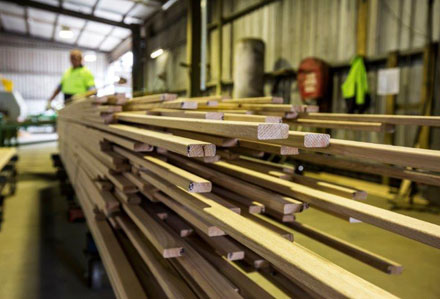
The timber industry bears the brunt of the pain in a massive expansion of parks and reserves in Victoria’s Central West under a Victorian Government report. The final report of the Victorian Environment Assessment Council, released late last Friday, said the biggest impact on the regional economy was to the reduction in timber milling and commercial firewood production. Source: Philip Hopkins for Timberbiz
“There will be minimal regional impacts related to potentially displaced recreational uses,” the report said. The report emphasised the importance of nature conservation, recreation and tourism in the Central West investigation area of 403,815 hectares, of which 161, 215 ha, or 40%, is public land.
The report recommended:
- An increase of 58,115 ha in protected areas (national park, conservation park, nature reserve, bushland reserve, heritage river) as a major step towards a comprehensive, adequate and representative protected area.
This is designed to strengthen the role of traditional owners in land use and management, cater for more recreational use, protect key areas for threatened species and protect landscape connectivity.
- An extra 19,728ha of regional parks, mainly for recreation. Domestic firewood collection would be allowed in some of the new parks but phased out over 10 years.
- A total of 30 new and expanded nature reserves.
- State forests would be reduced by 77,377 ha, leaving 11,901 ha of state forest (40% of the state forest area) for timber harvesting and recreation. This resource would supply Pyrenees Timber at Chute.
VEAC said the economic benefits of its recommendations amounted to a net benefit of $247 million to the Victorian economy over 30 years. The gross benefit ($270 million) came from improved protection of native vegetation.
“The estimated likely costs ($22 million present value over 30 years) mostly result from impacts on wood product harvesting, and recreational prospecting, hunting and dog walking,” the report said.
No future timber harvesting would be allowed in the Wombat-Macedon block (228,770 ha), which was previously an important timber industry area. VEAC said there was strong support, particularly in the Wombat forest, to restore forests to a more natural structure.
“VEAC is now recommending an independent research study to determine the most effective restoration treatments for forests whose structure, composition and ecological function have been altered by a history of intensive logging,” the report said.
VEAC said the implications of its recommendations for wood products were difficult to quantify without explicit information about sustainable harvest levels. Further complications were unpredictable variations in markets, such as home heating, and large areas beyond the Central West where wood could be sourced.
The report estimated that recommended sustainable harvest level of 2400 cubic metres from the remaining state forest resource would be “close to sufficient supply” to the mill at Chute.
Regarding fencing and commercial and domestic firewood, “there is insufficient information to determine the implications of the final recommendations”.
“Applying pro-rata the reduction in state forest area, there would be a 60 per cent reduction in availability of these products,” VEAC said.
Elsewhere, all commercial harvesting would cease across the Wombat and Wellsford forests and most of the southern slopes of the Pyrenees. Cuts in harvest volumes were likely to be several hundreds of cubic metres of fencing timbers and several thousands of cubic metres of commercial firewood.
“VicForests advice is that there would be limited opportunity to relocate,” VEAC said. “There would be similar relative levels of reductions for several other products sourced in these areas including bark and wood chop logs.”
There had been few sawlogs from the Pyrenees and none from the Wombat forest in recent years.
“In terms of box ironbark sawlogs from Wellsford forest and potentially the lower slopes of the Pyrenees, harvesting would cease in those areas,” VEAC said.
“They comprise less than ten per cent of the total box-ironbark state forest estate in Victoria from which licensees can potentially harvest, suggesting a comparable level of reduction in timber volumes produced.”
The Andrews Government must now make a decision on the recommendations of the final VEAC report.





